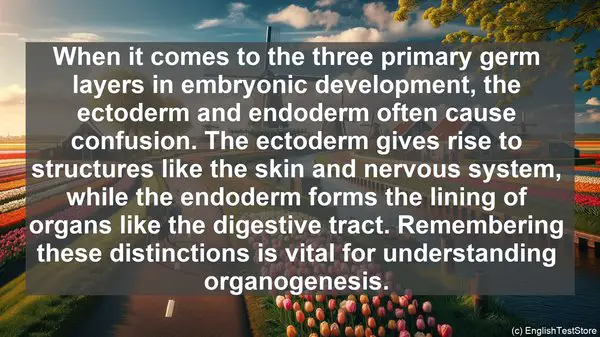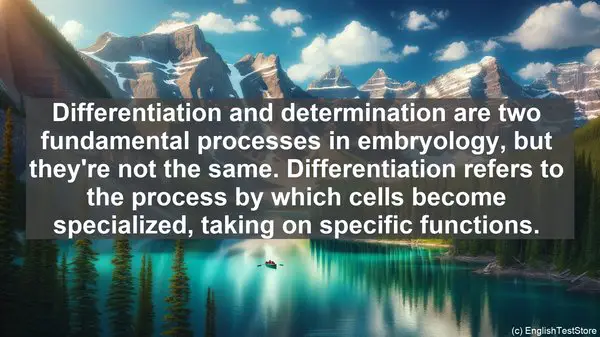Introduction: The Language of Embryology
Hello everyone, and welcome to this lesson on the top 10 commonly confused words in embryology. As students, we often encounter complex terminology that can be overwhelming. Understanding these words is crucial for grasping the intricacies of embryology. So, let’s dive in!

1. Differentiation vs. Determination
Differentiation and determination are two fundamental processes in embryology, but they’re not the same. Differentiation refers to the process by which cells become specialized, taking on specific functions. On the other hand, determination is the commitment of a cell to a particular developmental pathway. While both are essential, they occur at different stages and have distinct mechanisms.
2. Morula vs. Blastula
During early embryonic development, the zygote undergoes several stages. Two of the most critical stages are the morula and blastula. The morula is a solid ball of cells, while the blastula is a hollow structure with a fluid-filled cavity called the blastocoel. Understanding the differences between these stages is crucial, as they set the foundation for further development.
3. Ectoderm vs. Endoderm
When it comes to the three primary germ layers in embryonic development, the ectoderm and endoderm often cause confusion. The ectoderm gives rise to structures like the skin and nervous system, while the endoderm forms the lining of organs like the digestive tract. Remembering these distinctions is vital for understanding organogenesis.
4. Gastrulation vs. Neurulation
Gastrulation and neurulation are two critical processes in early embryonic development. Gastrulation involves the formation of the three germ layers, while neurulation is the process by which the neural tube, the precursor to the central nervous system, is formed. While both are essential, they occur at different stages and have distinct outcomes.
5. Teratogen vs. Mutagen
Teratogens and mutagens are agents that can cause abnormalities in developing embryos. However, they have different effects. Teratogens are substances that can lead to structural or functional birth defects, while mutagens can cause changes in the DNA sequence. Understanding these distinctions is crucial for assessing potential risks during pregnancy.
6. Induction vs. Patterning
Induction and patterning are two processes that play a significant role in embryonic development. Induction refers to the ability of one group of cells to influence the fate of neighboring cells. Patterning, on the other hand, involves the organization of cells into specific structures. Both processes are essential for the formation of complex tissues and organs.
7. Apoptosis vs. Necrosis
Cell death is a natural part of embryonic development, but there are different types. Apoptosis is a controlled, programmed cell death that occurs in a regulated manner. In contrast, necrosis is a more chaotic, uncontrolled form of cell death. Understanding these distinctions is crucial for understanding tissue remodeling and organogenesis.
8. Fertilization vs. Implantation
Fertilization and implantation are two key events in early embryonic development. Fertilization is the fusion of the sperm and egg, resulting in the formation of a zygote. Implantation, on the other hand, is the attachment of the developing embryo to the uterine lining. Both events are critical for successful pregnancy.

9. Placenta vs. Umbilical Cord
The placenta and umbilical cord are essential structures for fetal development. The placenta acts as a barrier, providing nutrients and oxygen to the developing fetus and removing waste products. The umbilical cord, on the other hand, connects the fetus to the placenta, allowing for the exchange of substances. Understanding the roles of these structures is crucial for understanding fetal development.
10. Organogenesis vs. Histogenesis
Organogenesis and histogenesis are two processes that occur during embryonic development. Organogenesis is the formation of organs from the germ layers, while histogenesis is the process by which tissues are formed. Both processes are complex and involve intricate cellular interactions. Understanding these processes is crucial for understanding the development of complex organisms.
